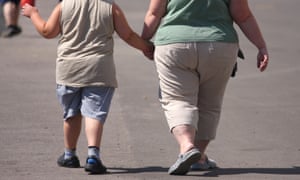
(Photograph credit score: Wikipedia)
By Henry I. Miller and S. Stanley Young
Many non-scientists are puzzled and dismayed by the continually changing tips that comes from medical and other researchers on numerous problems. One week, coffee causes cancer the subsequent, it prevents it. Where should we set the LDL threshold for taking statins to avert cardiovascular illness? Does the radiation from cell phones cause brain tumors?
Some of that confusion is due to the top quality of the evidence, which is dependent on a number of factors, although some is due to the nature of science itself: We form hypotheses and then complete experiments to check them as the information accumulate and different hypotheses are rejected, we grow to be more confident about what we think we know.
But it may possibly also be due to present state of science. Scientists themselves are turning out to be increasingly concerned about the unreliability – that is, the lack of reproducibility — of many experimental or observational final results.
Investigators who execute analysis in the laboratory have a higher degree of handle over the situations and variables of their experiments, an integral part of the scientific strategy. If there is significant doubt about the final results, they can repeat the experiment. In standard, the much more iterations, the much more self confidence about the accuracy of the results. Finally, if the final results are sufficiently novel and intriguing, the researchers submit a description of the experiments to a trustworthy journal, exactly where, after assessment by editors and expert referees, it is published.
Hence, researchers do the perform and, in theory at least, they are topic to oversight by journal editors (and whoever funds the research, which is typically a government company).
It is important to know how nicely this method works. In part, the response depends on the design of the study. Laboratory studies are “experimental,” that means that usually they decide the results of only a single variable, this kind of as various doses of a drug offered to rats (although the control group gets a placebo). By contrast, “observational studies,” in which individuals are queried and certain outcomes are recorded, do not attempt to have an effect on the outcome with an intervention.
In observational scientific studies, tens of 1000′s of individuals may be asked by epidemiologists which food items they eat, what medication they get, or even in which zip code they reside. These people are followed for some length of time and numerous wellness outcomes are recorded. Finally, the “data mining” of massive data sets like this searches for patterns of association — for instance, the consumption of particular meals or medicines correlated with overall health outcomes. A conclusion of this kind of a examine might be, “the use of hormone replacement treatment in girls in excess of 50 is associated with a decrease incidence of heart attacks,” or “people who consider massive quantities of vitamin C get fewer colds.”
Observational studies have both useful and theoretical limitations they might be suggestive but they are not able to show result in and effect. There is a essential difference between plausibility and provability, and a lot of this kind of studies are subsequently found to be misleading. For instance, in spite of early observational research that concluded the opposite, it is now clear that “Type A” personality does not lead to heart attacks. The original declare could not be replicated in two properly-carried out follow up trials. In fact, of about 50 claims discovered or suggested from observational research, none replicated when tested in randomized clinical trials.
How do we get so numerous erroneous conclusions from observational research? In most of them, from dozens to hundreds or even thousands of inquiries are asked. Statistical significance will occur by possibility about five% of the time, yielding false-optimistic results. Researchers might exploit this phenomenon by asking tons of inquiries and then producing a story all around what are most likely random, or opportunity, events.
If designed and performed properly, lab-primarily based experiments need to be more trustworthy than observational research. However, recent proof signifies that frequently they are flawed: Researchers may possibly tinker with their experimental layout until they get the end result they want and then rush to publish with out replicating their own perform, for instance. Investigations have discovered systematic deficiencies of methodology in specified complete sectors of lab investigation. One such spot is experiments in animals randomization and blinding are not a part of researchers’ culture, whereas the arbitrary dropping of animals from the benefits of a study is. In a spectacular recent article in the journal Science, one investigator associated what frequently occurs: “You appear at your information, there are no rules…People exclude animals at their whim, they just do it and they don’t report it.” The result of such practices is that interventions to cure or benefit animals frequently fail to replicate in humans.
Such failures to replicate experiments have essential implications, because drug companies and foundations with targeted interests frequently try to apply the final results of experimental biology to the advancement of products for therapeutic interventions, the creation of dietary tips and other applications.
After a series of failed attempts to lengthen basic investigation findings (from academic labs), two large drug firms, Bayer and Amgen, very carefully reviewed their personal knowledge and located that only 25 and eleven percent, respectively, of the claims in the scientific literature could be replicated in a way that was sufficiently robust to be helpful as the basis for drug improvement projects. Astonishingly, even when they asked the original researchers to replicate their very own perform, for the most part they could not. This might describe why scientists’ capacity to translate cancer investigation in the laboratory to clinical good results has been shockingly poor.
The extremely respected journal Nature Biotechnology recently ran an editorial on this subject. It appeared in the identical concern as a report of the inability of a team of scientists to replicate an earlier mouse experiment (which had supposedly identified that a certain class of RNAs in foods plants could be absorbed into the bloodstream of animals and trigger an effect on gene expression) by a various investigation group that had been published in the journal Cell Study. The latter journal should have published the second post which, in effect, repudiated the earlier report, but the editors declined to do so. Therefore, it fell to Nature Biotechnology to stage up, because, stated the editorial, “When an first report prompts this level of concern and involves a significant investment of time, energy and assets from both researchers and regulators in evaluating its findings and comprehending its implications, then a carefully controlled and executed replication examine plainly warrants publication.” Kudos to Andrew Marshall, the journal’s editor.
A number of empirical scientific studies display that 80-90% of the claims coming from supposedly scientific studies in significant journals fail to replicate. This is scandalous, and the issue is only probably to turn into worse with the proliferation of “predatory publishers” of several open-access journals. According to an expose of these practices by Gina Kolata in the New York Occasions, the journals published by some of the worst offenders are practically nothing a lot more than income-generating machines that eagerly, uncritically accept essentially any submitted paper.
The Problems With "Scientific" Investigation These days: A Lot Which is Published Is Junk





